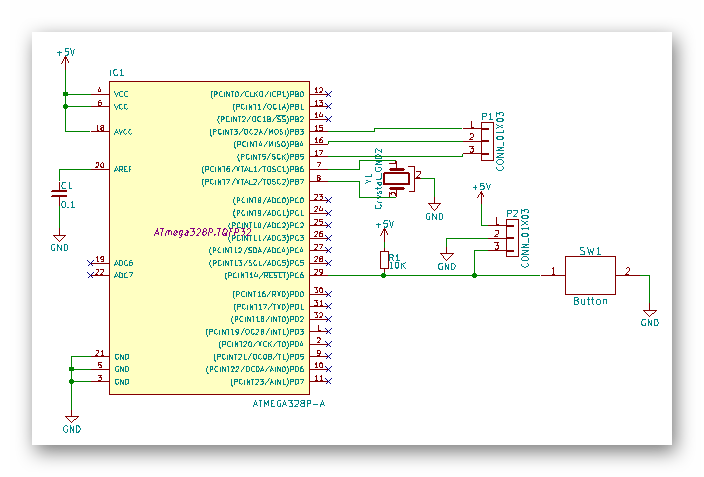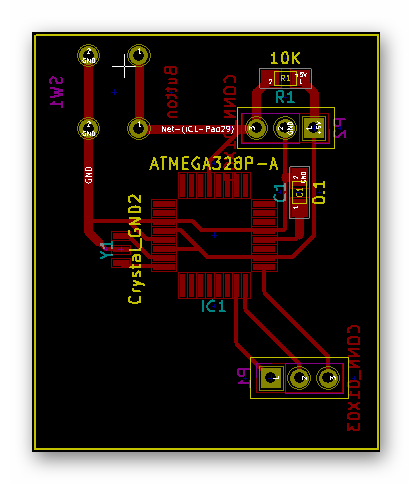Hey guys,
Since I last talked to you I have still been trying to troubleshoot the ATmega328p, in particular burning a bootloader onto it. I successfully burned a bootloader onto another uno using an uno, which I just did as a sanity check to make sure I actually knew how to do that.
I also made a "breakout board" that essentially just had the bare minimum needed to burn the bootlosder onto the chip;


Unfortunately this did not work either. I suspect that the crystal is not properly soldered on to the board (it is an incredibly small component). Next week I need to thoroughly probe the traces to be absolutely sure that the issue is not there.
I have also ordered additional resonators to see if that may be the issue. One is essentially the same crystal I am using but is a through hole component, which will allow me to take the variable of soldering out of the equation. If I can successfully burn a bootloader using that crystal it will tell me that my current issues lie with the soldering. Whether I am damaging the component when I solder or am simply creating shorts, I am unsure. Hopefully the additional probing will give me additional insight.
Till next time,
-Eric
 eric
eric
Discussions
Become a Hackaday.io Member
Create an account to leave a comment. Already have an account? Log In.
You need to put 22pf caps on either side of the crystal, they are required. This isn't a bypass thing, it's a phase/LC time constant thing. https://en.wikipedia.org/wiki/Pierce_oscillator
Are you sure? yes | no
What you could try is switching the programmer to a "slow clock" mode -- I discovered that I sometimes need to do that with new chips before I set the fuses on them to switch to a higher frequency.
Are you sure? yes | no